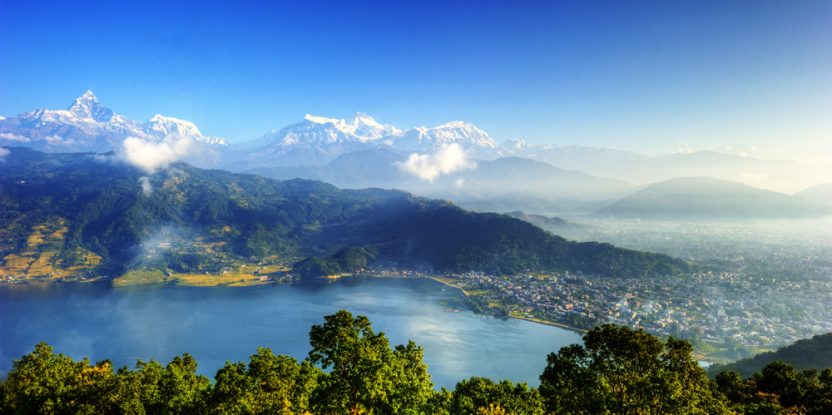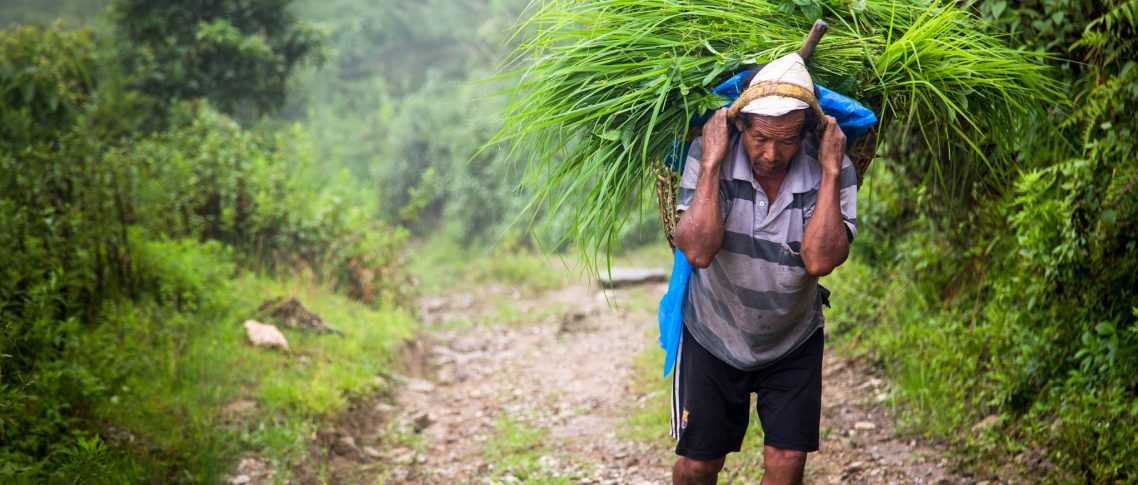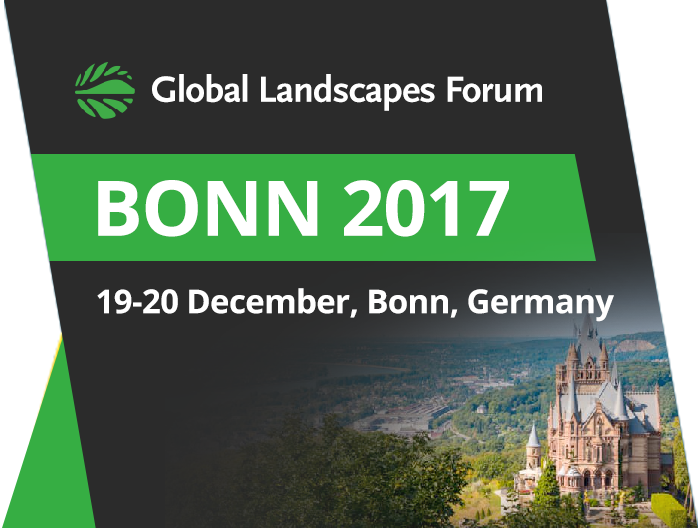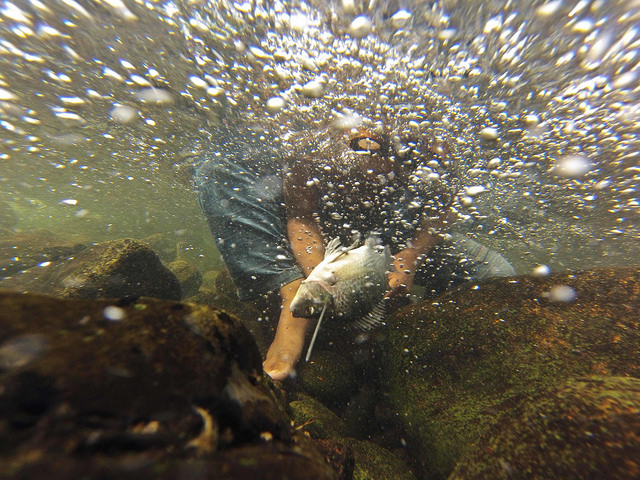
On a clear day, reflections of snow-capped peaks shine like a vivid oil painting on the surface of Phewa Lake. Trees and shrubs blanket the ridges tumbling down to the water, and beyond, villages dot the landscape among the fields of tea and coffee. Some 500,000 tourists visit this area in Nepal just south of Pokhara annually, using it as a base to conquer the nearby 2,508-meter peak of Panchase, as a gateway to the Annapurna Circuit, or simply as a place of quiet contemplation.
As idyllic as the Phewa Lake region is now, it wasn’t always this way. Some 40 years ago, the emerald hillsides—steep, with average slopes of 40 percent—were barren and eroded, and the midnight-blue waters of the lake were laden with sediment. Nearby fields and villages were prone to flash floods and mudslides.
But an exemplary experiment in community-based forest landscape restoration (CBFLR), kicked off by the Nepalese government in the late ’70s, helped reverse the damage, allowing the area to re-blossom into the bucket-list dream and clean watershed for local communities that it is today.
A recent paper documents this extraordinary recovery, providing analysis of land cover change in the surrounding area over a 40-year period. Using satellite imagery from 1975, 1995 and 2015, in conjunction with discussions with local communities and experts on their perceptions of impacts and benefits, the research provides a clearer picture of how the landscape and land-use trends changed over time.
“In the 1970s, the watershed was severely degraded,” says lead author Kiran Paudyal. “So the government of Nepal started conservation of the watershed and later moved to bring people’s participation into the efforts. We wanted to look at the impact of CBFLR on land use, land cover, as well as the ecosystem services impacts on the local and global community through things like carbon sequestration and biodiversity.”
The study found not only that the forest recovery was tremendous, but also that it was due largely to the local community involving themselves directly in the efforts and being properly compensated for doing so. This integration of economy and ecology, Paudyal believes, is key to successful restoration of forests not just here, but anywhere.
The resulting study was published in a Special Issue of International Forestry Review on forest landscape restoration, launched at the recent Global Landscapes Forum in Bonn, Germany.
WATER IN THE LANDSCAPE
Phewa Lake is fed by 19 streams and small brooks, covering 3.3 percent of the watershed area and holding 42.18 million kiloliters of water. Its cleanliness is crucial to the communities that depend on it as a water source, but its attraction as a profitable tourism destination makes protection even more paramount.
Like protecting a castle by fortifying its outside walls, keeping the lake in good health requires proper care of the surrounding land — the watershed — more so than its waters.
“There’s a huge economy connected to the lake,” says Paudyal. “If the watershed is not preserved, the lake will disappear, as well as the associated tourism.”
No one knows how to care for the watershed better than those who have long inhabited it. This was made clear when, in 1957, the Private Forests Nationalization Act disrupted traditional forest management, which quickly led to the uncontrolled felling of trees and rapid deterioration of natural ecosystems both near Phewa and around the country.
“Before 1950, environmental resources were managed informally by local communities. But then the government took over and nationalized all forestry areas, declaring them government property, and banned private management,” says Paudyal.
“The local communities were very disappointed because Nepalese mountains are fragile, and there were landslides. You can still see the scars.”
In response, the government started to engage local communities in protection and management of forest resources and handed back degraded forest areas, including the Phewa Lake watershed, to local communities to restore them. And it worked. In the Phewa area, forest productivity soon doubled, production of grass and fodder for livestock increased fivefold, biodiversity restored itself, and ecosystem goods and services again began to rise. Nationally, forest area grew from 39.6% in 1999 to 44% in 2015, largely attributed to CBFLR and watershed conservation campaigns.

UPSTREAM, DOWNSTREAM
The restoration process did not come without its challenges. Some were posed by the communities themselves, stemming especially from the divide between those who lived upstream and downstream. While those who lived downstream benefitted directly from the water source, the communities who lived upstream and were largely responsible for the health of the water source often received limited economic benefits for their work.
In the case of Phewa, those who lived by the lake enjoyed a booming tourism economy, while those who lived higher up by the tributaries were far removed from this source of income.
“At first, downstream people were only interested in their businesses,” says Paudyal, recalling the discussions held with communities involved in the Phewa efforts. “There was conflict because they were blind to the people living upland. They blamed upstream communities for clearing forests. But now they understand that it’s a different economy [upstream]. The people learned, and now we can go further.”
“There was misunderstanding,” confirms CIFOR scientist Himlal Baral, who hails from the Phewa watershed area, and contributed to the paper. “It takes time to resolve, but now downstream communities are showing interest in supporting upstream communities with ‘payment for environmental services’.”
Going forward, neighborly awareness between upstream and downstream communities, as to how they depend on one another and the benefits each deserves, is crucial to this watershed’s management.
PAYING IT FORWARD
Caring for the environment is no easy task, and one of the primary reasons for the success in restoring the Phewa area was that upland communities were compensated for their work. Rather than setting in place a series of mandates for watershed conservation, the government made community contributions voluntary. It incentivized this by helping replant large areas of degraded land and providing technical assistance to communities who continued fostering the regrowth, with support from outside aid organizations.
While this didn’t directly put money into the pockets of upstream communities, it did accelerate the growth of their forests and therefore their access to fuelwood, fodder for livestock, and other forest products and services.
“Local communities made a huge impact, and those who helped protect the watershed were able to get additional benefits,” says Paudyal. “The local community should have benefitted way more than they had previously, but this had never been analyzed.”
Now, as communities modernize, these benefit mechanisms need to be flexible, and in large part put in the hands of the communities themselves.
“If we arrange incentives, the community will protect forests,” continues Paudyal. “For example, if we agree they have a right to change land use, they can plant other crops that they feel are profitable. If we want forests to be continued in landscapes, the community must be compensated.”
“In my view, this particular watershed gets more attention and priority due to the tourism,” says Baral. “The communities’ motivation and engagement is not only to protect the lake but also their own villages and lives, which were severely affected by the landslides of the 1960s and ’70s.”
NEPAL AND BEYOND
How to regulate compensation for CBLFR is a topic of conversation not just in Nepal, but around the world among NGOs and governments. Tax systems or a money collection and distribution instruments are some of the routes being discussed, but the research shows that a likely path will be through consensus among upstream and downstream communities, with the technical assistance of experts.
As for global pocketbooks, the latest study is a case in point that CBFLR can help achieve international goals without breaking the bank. Rather than taking a top-down approach to restoring 350 million hectares of land by 2030 — as called for by the Bonn Challenge and New York Declaration — involving local communities is more cost-effective and socially beneficial, too.
“I think we can replicate this model from Nepal in highly targeted restoration areas. If we involve local communities, costs can be remarkably lower, and it could be an easier way to achieve landscape restoration around the world,” Baral says.
We want you to share Forests News content, which is licensed under Creative Commons Attribution-NonCommercial-ShareAlike 4.0 International (CC BY-NC-SA 4.0). This means you are free to redistribute our material for non-commercial purposes. All we ask is that you give Forests News appropriate credit and link to the original Forests News content, indicate if changes were made, and distribute your contributions under the same Creative Commons license. You must notify Forests News if you repost, reprint or reuse our materials by contacting forestsnews@cifor-icraf.org.


